Bohol Island - Philippines.
- What to visit:
-Chocolate HILLS
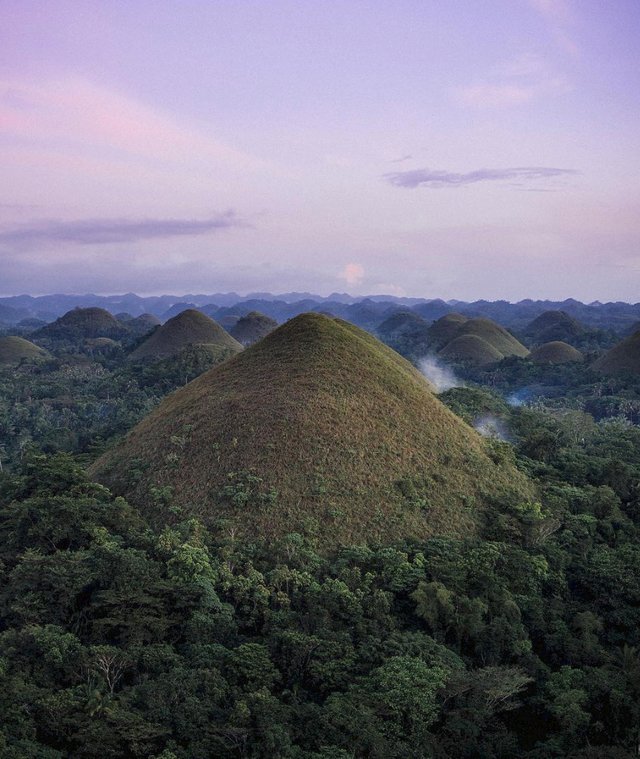
This is one of the most famous attractions of the Philippines. 1268 regular mounds, which during the dry season take on a characteristic brown color (most often begin to brown in March). They have a height of 30 to 100 meters and are built of limestone hills due to the weathering of the rocks. They are covered with grass, no trees grow on them, which gives a stunning effect.
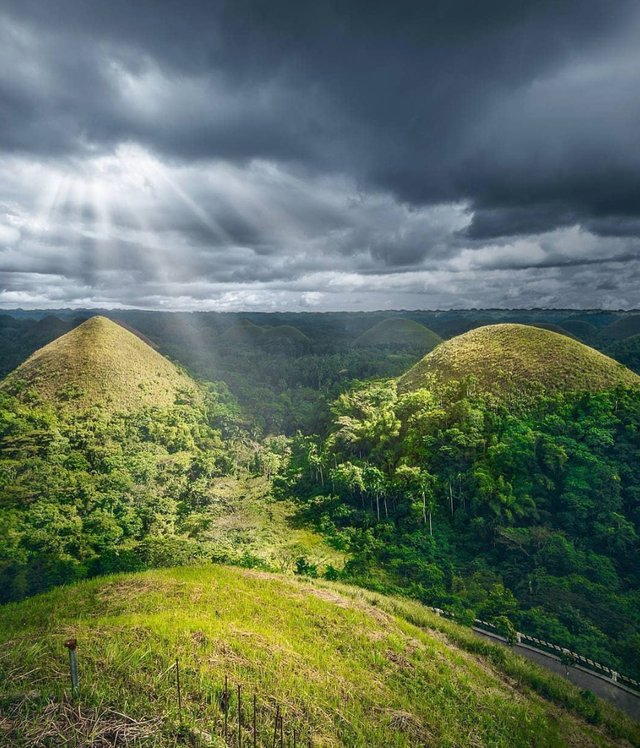
A feast for the sense of sight
Children can be disappointed, but in these numerous hills there is no hint of sweetness. Their name was created in connection with the brown color, which shimmers over the rising grass. This effect can be seen only during the dry season, i.e. between December and May. As a result of insolation, a characteristic chocolate color is created which contrasts fantastically with the greenness of shrubs, trees and fields, located between particular hills. For the rest of the year, when the Philippines suffers heavy rains, the described grass becomes green again.
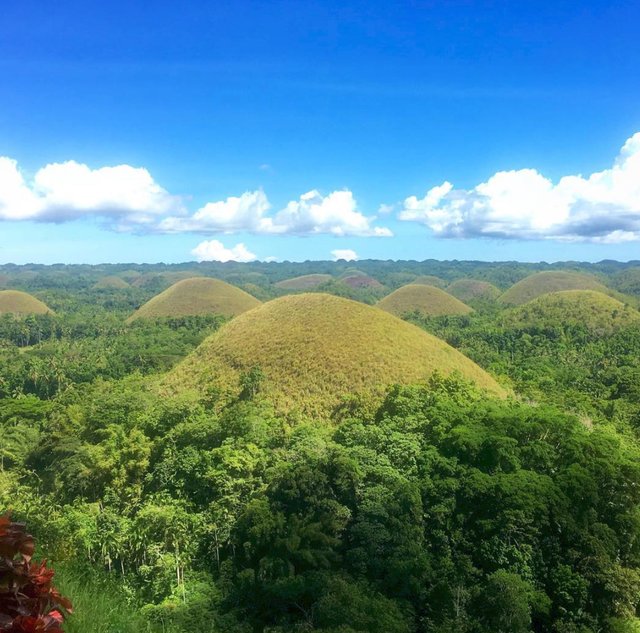
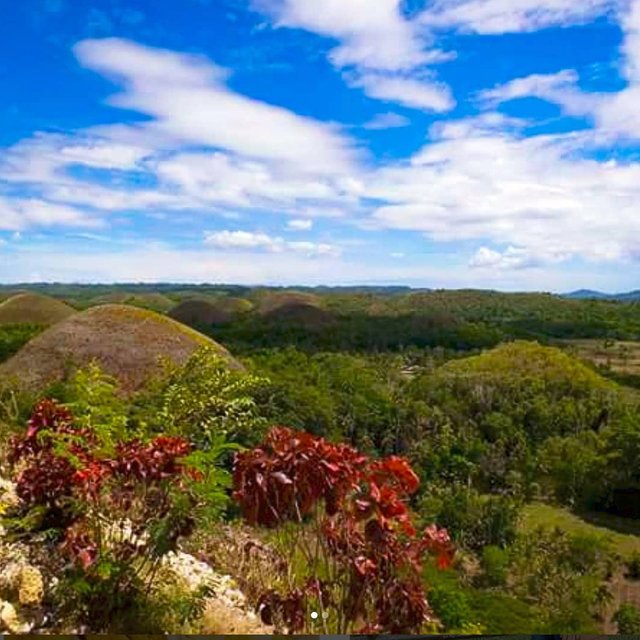
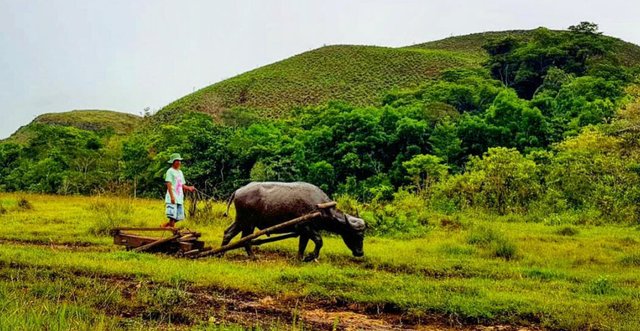
There are legends about Chocolate Hills. One of them speaks of giants that threw stones. Another recalls the unlucky giant, whose beloved was an ordinary mortal. Not only did she reject his advances, but after a short time she fell ill and died. Tears formed from the tears of the distraught giant.
Chocolate Hills are located in the middle of the island of Bohol, near the town of Carmen. It is best to admire them from the vantage point, which is reached by stairs (everything is very well marked).
From all the cities of Bohol, on the Philippine Archipelago, the municipality of Carmen is the most known and visited. The town is small, quite rural, and yet everyone visits it every day since the Hills of Chocolate are considered one of the wonders of the world! Looking at the map, it is located in the middle of Bohol around 58.8 kilometers from Tagbilaran City, the capital of Bohol. It is strategically located in two national roads that extend from coast to coast intersect in Carmen.
Regarded in the third-class community, Carmen covers 29,804 hectares of land and is home to 43,155 people according to the 2007 census. Everywhere you can see rice fields, coconut and banana groves and other tropical plants in addition to the rising hills of chocolate.
The whole area is politically divided into 29 barangas: Alegria, Bicao, Buenavista, Buenos Aires, Calatrava, El Progreso, El Salvador, Guadalupe, Katipunan, La Libertad, La Paz, La Salvacion, La Victoria, Matin-ao, Montehermoso, Montesuerte, Montesunting , Montevideo, Nueva Fuerza, Nueva Vida Este, Nueva Vida Sur, Nueva Vida Norte Poblacion Norte, Poblacion Sur, Tambo-an, Vallehermoso, Villaflor, Villafuerte and Villarcayo.
Carmen is an important source of cassava, coconut, rice, bananas, pineapples and other vegetables. These main crops always reach the markets of other cities, especially on "Tabo" or market days; whose distribution differs in each city.
Carmenanons, as they are called, have the main purpose of agriculture, while others deal with trade and other companies, especially those that are located near Poblacion. Others are employed in government institutions, such as municipal offices, health centers, the hospital and various companies in the area.
Carmen is home to a vocational school, the State Higher School of Agriculture, Forestry and Technology in Central Visayas, whose main campus is located in Bilar. It also has a private school, the St. Antoni, offering a complete complementary course. These are day care centers offering kindergarten and kindergarten, primary and secondary schools located in the city's barbadan.
The local spoken language is the Visayan or Cebuano dialect, although most Carmenanons speak English. English is a universal language and people have learned to read, speak and write in English because they were small. Most often, and even to this day, fines are levied on those who do not speak English at school. Exactly this foreign language is vaccinated in every Boholano.
Carmenans are definitely very religious people, mostly Catholics. Religious activities revolve around the barangay chapels, but the main religious activities are concentrated in the parish church in Carmen. The parish church is a spokesman for San Antonio Abad, whose holiday falls on January 17. With great love for people to their holy patron, his holiday is often celebrated with great zeal other than religious nature.
From theory to practice - how to get there?
A wonder of nature, which is undoubtedly Chocolate Hills, is located on the tenth largest island of the Philippines - Bohol from the central region of Visayas. The largest cluster of these attractions is located in its central part, around the cities of Carmen, Batuan and Sagbayan, although also in the south there is a smaller dispersion of hills.
You can get to the island by plane. Every day from the capital of the Philippines - Manila - there are several courses to the Tagbilaran airport. From many different islands you can easily get to the place by sea.
The main viewpoint on the hills is located near Carmen and is called Chocolate Hills Complex. It is located just over 50 km from the airport, from where you can easily rent a scooter, a car or a bigger van or take advantage of the offer of an organized trip. Tourists focused on larger adventures, they can get to the place also by an ordinary bus to Carmen.
On the observation deck you have to climb the 214 steps, but the view will compensate for this little trip. The whole horizon extends to unprecedented and difficult to explain geological wonders occurring only in this region of the world. At the top there is also a small tourist resort, where you can buy souvenirs associated with Chocolate Hills.
Another observation point is located at the top of Sagbayan, in the town of the same name. It is located 75 km north-east of the Tagbilaran airport and offers another point with a 360-degree perspective and a view not only of the hills but also of the turquoise sea that separates Bohol from Cebu.
-EXPRESSIONS, OR TARSIAS
Tiny animals that live only in the Philippines and Indonesia. Polish are called wyraki, which I personally do not like very much. I definitely prefer the English name "tarsier" (tarsier). They are charming, they look like little monkeys, but they are not monkeys. They have huge eyes (the largest among mammals, taking into account the proportions of eyeballs to body size) and long tail. They are nocturnal animals, they are attached to the tree during the daytime, therefore they are watched in total silence. Eat insects, spiders, lizards and small birds.
At Bohol, it's best to go to Philippine Tarsier and Wildlife Sanctuary, where for a small amount of money, you can see the wyryi in the natural environment.
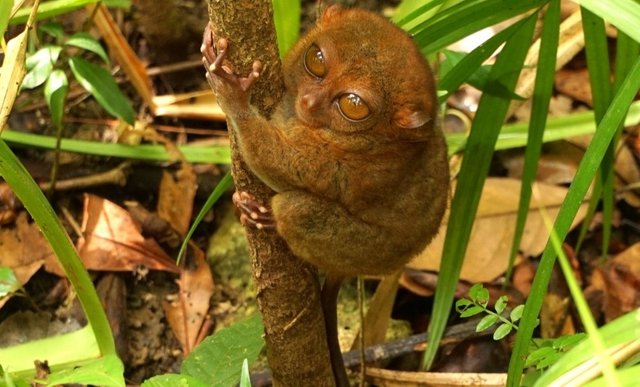
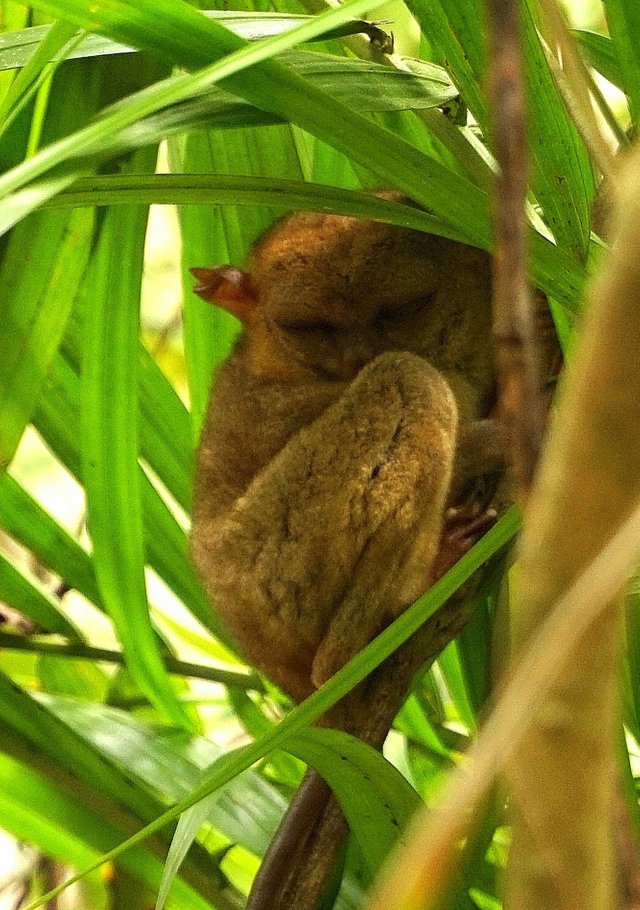
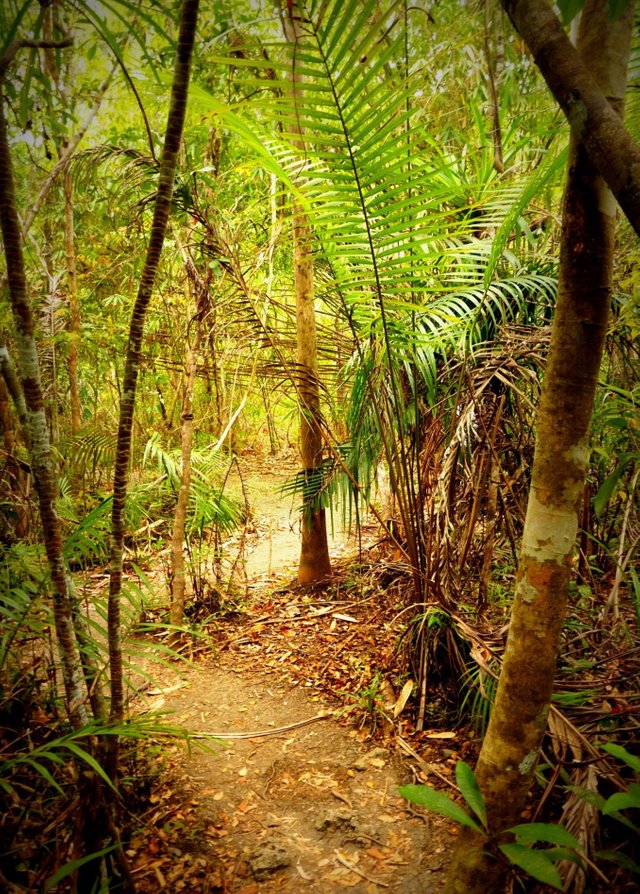
-PANGLAO NUNKING
Panglao is a separate island, but away from Bohol only a dozen or so minutes by tricycle (they are connected by a bridge). It is a place known among divers from around the world. From there you can sail to the nearby islands of Panglao or Balicasag and dive on the beautiful coral reefs. Sea turtles of various sizes and varieties, barracuda shoals, clownfish guarding their anemones (these are the lovely red fish known from the fairy tale "Where is Nemo?", They are small, cute and make dangerous faces for photos).
What can you do in the area outside of diving? To sunbathe, eat, drink coconuts and rest. And in the evenings, integrate with other divers in one of the atmospheric pubs.
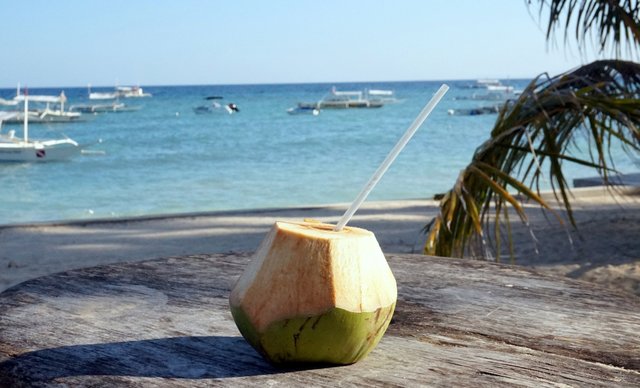
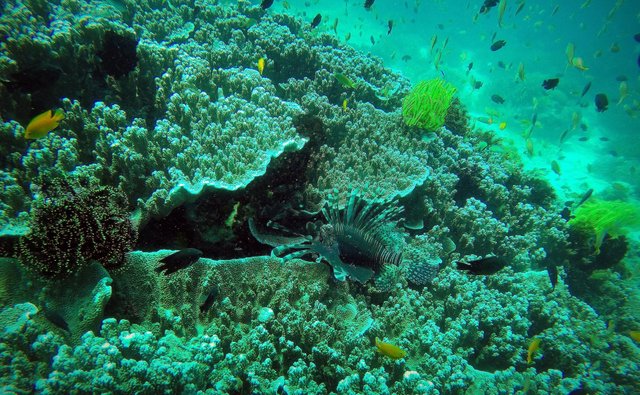
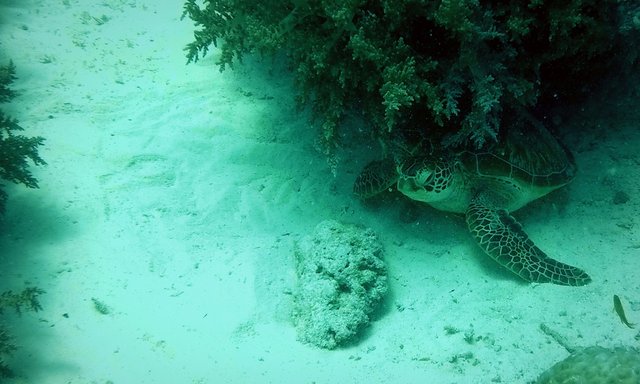
-ANDA BEACH
We came here by accident, because we did not catch a ferry to the island of Camiguin. Anda Beach is located in the eastern part of the island of Bohol. From Tagbilaran (the main city, there is an airport, shopping malls and other McDonalds) you are going here about 3 hours.
A cool alternative to Panglao, especially for people who do not like crowds. A beautiful, wide, sandy beach and a view of volcanoes that are on the neighboring island (referred to above mentioned Camiguin).
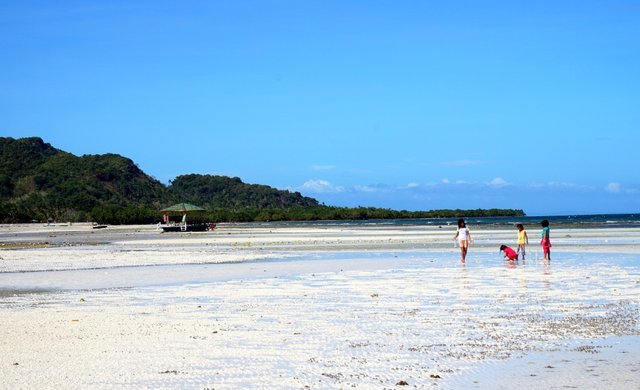
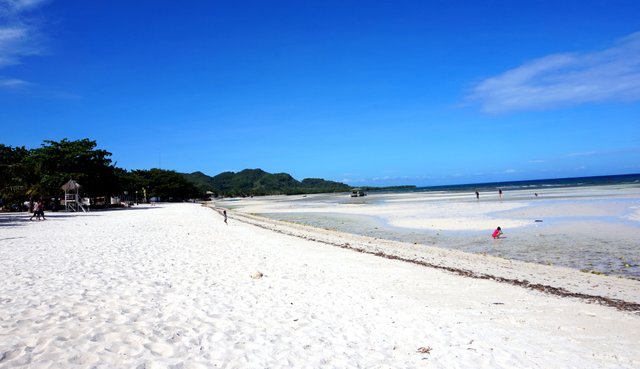
-BAMBOO MOSTS
You can get here on the way from the tarsier reserve to Chocolate Hills. Two hanging bamboo bridges, à la Indiana Jones. Suspended over a river with a beautiful color.
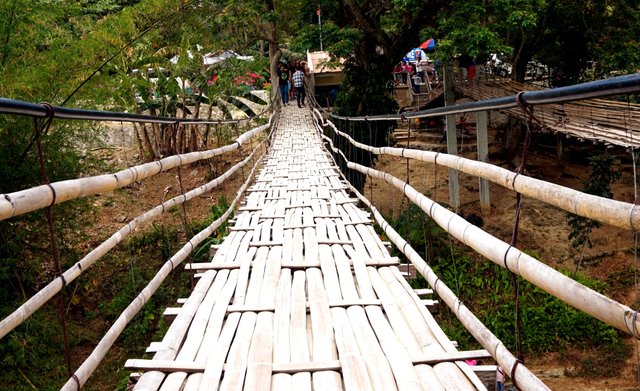
-WATERFALL
After reading the blog post In the Philippines, we wanted to get to the Antequera waterfalls. We finally reached Mag-Aso Falls in the late afternoon. I'm not sure if we hit it well. Either during the dry season the waterfall fell so much that it looked quite different than in the pictures or we got to a different place. Anyway, quite a nice place, calm, in the middle of the forest, actually a small jungle. You can cool off, splash in a waterfall (river, or actually a lake) and relax after a day of sightseeing.
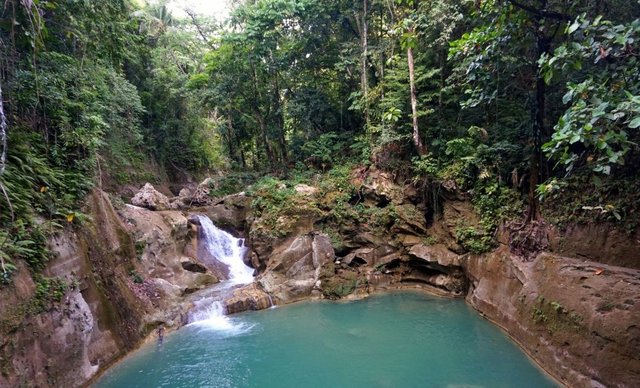
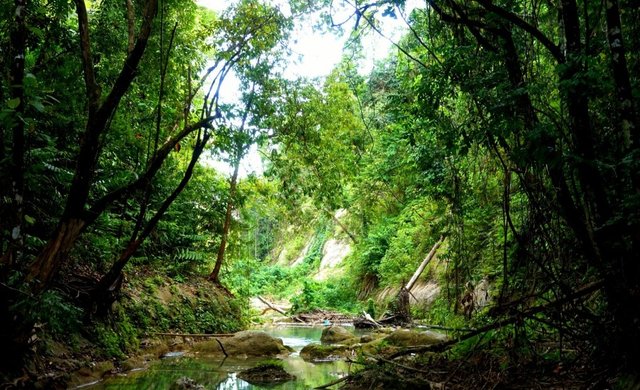
2.Other attractions
Historic Bohol Churches - Spanish architecture and frescoes
Almost all of the 47 cities have the old, massive, stone churches of Bohol with frescos, sculptures and other products of the Spanish presence - one of the most attractive places on the island.
Festivals and holidays - Fiestas in Bohol
Bohol festivals and holidays are an inseparable part of the Boholano culture. Boholanos are loving fun, generous in guilt and deeply religious.
Rod Houses- Old Houses
Bohol Ancestral Houses from the twentieth century of the Spanish regime, which is said to be the "golden age" of Bohol, these old houses were huge and mainly built of coral stone and hardwood.
Caving and visiting caves
So far, the foundation of limestone has created about 1,400 Bohol caves on the whole island, which took its name from the word "buho", which means "a hole" from which spring waters usually spurt.
Cross-Country Trekking, Climbing, Hiking, Walking, Ecotourism
Bohol Trekking offers hills, forest patches interwoven with small villages and pastoral farmland, mountain treks without ascending high mountains
Restaurants
Bohol restaurants offer various gastronomic and culinary options - located in hotels, leisure centers or near the city of Tagbilaran and other cities offering local or international cuisine. Seafood!!
Tastes of Bohol
Bohol is also known for his holiday fiestas and merry holidays. And one thing that you can boast about is the native, delicious delicacies that have already been recognized as the delicacy of Boholano Delicacies.
Souvenirs and handicrafts
Major Bohol shopping in Tagbilaran. Shopping souvenirs and handicrafts. Find Bohol crafts and decors, Tarsier dolls, shells, pearls and purses. Buy baskets, jewelry and wooden furniture. Calamay?
Bohol products
Bohol is known for its own native products, products made from native materials found in the province and processed and made with the hands and sweat of indigenous people of Bohol.
- Other Cities
Tagbilaran City
Tagbilaran City is the main city and gateway to the island of Bohol and is known as the City of Peace and Friendship - one of the Filipino cities of dreams - dating back to the 1600s
Sagbayan
Sagbayan is one of the inner cities of the province of Bohol. It is also one of the three cities where you can find the famous famous Chocolate Hills. He is known for his Sagbayan Peak.
The beautiful island of Panglao
Panglao is one of the two municipalities that form the island of Panglao, and the other is Dauis. It is now a well-known tourist destination because of the white sandy beaches and world-class ...
Cabilao Island
The island of Cabilao is one of the attractive islands of Bohol, with crystal clear water, sandy beaches and exciting diving spots. It is located in the western part of Bohol in the middle of the Cebu Strait.
Birding in Olango Island, Rajah Sikatuna National Park
Watching birds or birds becomes a favorite activity for more and more people. Rajah Sikatuna National Park, Olango Island Nature Reserve.
Very well presented man. I totally like it.
Downvoting a post can decrease pending rewards and make it less visible. Common reasons:
Submit
This user is on the @buildawhale blacklist for one or more of the following reasons:
Downvoting a post can decrease pending rewards and make it less visible. Common reasons:
Submit